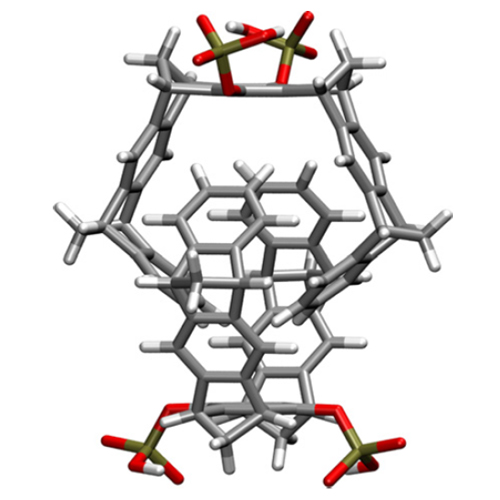Molecular Tweezers with Varying Anions: A Comparative Study
10-Jun-2013
J. Org. Chem., 2013, DOI: 10.1021/jo4009673, 78 (13), pp 6721–6734 published on 10.06.2013
J. Org. Chem., online article
J. Org. Chem., online article
Selective binding of the phosphate-substituted molecular tweezer 1a to protein lysine residues was suggested to explain the inhibition of certain enzymes and the aberrant aggregation of amyloid petide Aβ42 or α-synuclein, which are assumed to be responsible for Alzheimer’s and Parkinson’s disease, respectively. In this work we systematically investigated the binding of four water-soluble tweezers 1a–d (substituted by phosphate, methanephosphonate, sulfate, or O-methylenecarboxylate groups) to amino acids and peptides containing lysine or arginine residues by using fluorescence spectroscopy, NMR spectroscopy, and isothermal titration calorimetry (ITC). The comparison of the experimental results with theoretical data obtained by a combination of QM/MM and ab initio1H NMR shift calculations provides clear evidence that the tweezers 1a–c bind the amino acid or peptide guest molecules by threading the lysine or arginine side chain through the tweezers’ cavity, whereas in the case of 1d the guest molecule is preferentially positioned outside the tweezer’s cavity. Attractive ionic, CH-π, and hydrophobic interactions are here the major binding forces. The combination of experiment and theory provides deep insight into the host–guest binding modes, a prerequisite to understanding the exciting influence of these tweezers on the aggregation of proteins and the activity of enzymes.











